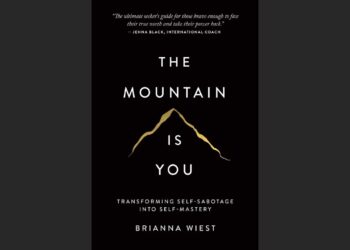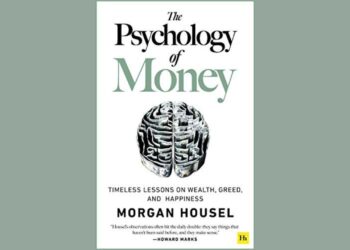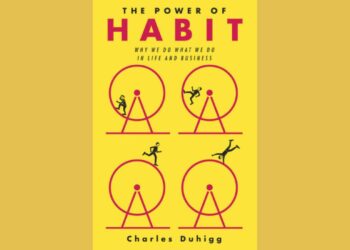Table of Contents
1-Sentence-Summary: “The Let Them Theory” by Mel Robbins is a practical guide that teaches you to reclaim your personal power by letting go of the need to control others’ actions and opinions, and instead focusing on taking responsibility for your own choices and responses.
Listen audio summary
Introduction: My Story
Mel Robbins begins by sharing her personal rock-bottom moment at age 41, facing overwhelming debt, unemployment, and marital strain. This period was characterized by anxiety, self-doubt, and avoidance. The turning point came one morning when, inspired by a rocket launch countdown, she created the “5 Second Rule” (5-4-3-2-1-GO) to force herself out of bed and take action despite her negative feelings. This simple tool became the catalyst for rebuilding her life, teaching her that action, not motivation, is the key to overcoming internal obstacles.
While the 5 Second Rule helped her conquer her inner battles, she realized it didn’t address the external struggles of dealing with other people. Her obsession with managing others’ opinions, actions, and feelings was a significant source of stress. This led to her discovery of the “Let Them Theory,” a two-word mantra that transformed her relationship with everyone else. The theory is about relinquishing the impossible task of controlling others and redirecting that energy toward what you can control: yourself. It’s a framework for setting yourself free from the drama, judgment, and expectations of others, ultimately leading to more peace and better relationships.
Part 1: The Let Them Theory
Chapter 1: Stop Wasting Your Life on Things You Can’t Control This chapter introduces the fundamental problem the book addresses: we unknowingly give away our power by trying to manage and please other people. This futile effort leads to exhaustion and the feeling of never being enough. The “Let Them Theory” is presented as the solution. It is a simple yet profound mindset shift that grants freedom. By mentally saying “Let Them,” you stop obsessing over what others think, say, or do, and instead, focus on your own life. This practice allows you to reclaim your time, energy, and peace of mind. The core idea is that your happiness is tied to your own actions, not the reactions or behaviors of others.
Chapter 2: Getting Started: Let Them + Let Me Robbins explains that “Let Them” is only the first half of the equation. The second, more crucial part is “Let Me.” “Let Them” creates detachment and emotional space, preventing you from getting bogged down by hurt or frustration. However, stopping there can lead to isolation and a sense of superiority. The “Let Me” step is the power move where you take responsibility for your own response and actions.
Using the example of feeling excluded from a friend’s trip, Robbins illustrates how “Let Them” helps you rise above the initial pain. “Let Me” then prompts introspection: “Let me be honest about my role,” “Let me be more proactive in my friendships,” “Let me take responsibility for creating the social life I want.” This two-part process shifts the focus from blame and helplessness to empowerment and proactive change. It creates balance, allowing others the grace to be themselves while you take control of your own life and happiness.
Part 2: You and the Let Them Theory
Chapter 3: Shocker: Life Is Stressful This chapter applies the theory to managing everyday stressors. Robbins argues that we waste immense energy on minor annoyances like traffic, slow cashiers, or rude strangers. These small things trigger our brain’s stress response (amygdala activation), hijacking our prefrontal cortex and putting us in a state of “fight, flight, or freeze.” The “Let Them Theory” acts as a reset button. By saying “Let Them,” you signal to your brain that the situation isn’t a true threat, allowing you to calm down. The “Let Me” step involves taking a conscious breath and choosing a constructive response, thereby taking back control from your automatic stress reaction.
Chapter 4: Let Them Stress You Out The focus here shifts to larger, chronic stressors, particularly at work. Robbins uses the example of being repeatedly passed over for a promotion despite deserving it. The theory’s application is clear: “Let them” not promote you. You cannot control your boss’s decision. Wasting energy on frustration is counterproductive. The empowering move is “Let me” take responsibility for my career. This means updating your resume, networking, and actively seeking opportunities where you will be valued. The theory encourages you to stop feeling like a victim of your circumstances and start being the agent of your own career progression. It’s about recognizing that you are never truly stuck and that your future is in your hands.
Chapter 5: Let Them Think Bad Thoughts about You This chapter tackles one of the biggest fears that holds people back: the fear of judgment. Robbins confesses she delayed marketing her speaking career for two years because she was terrified of what friends and family would think. The reality is, you can never control others’ thoughts. People will have negative opinions no matter what you do. The solution is to grant them the freedom to think whatever they want. “Let them” judge. “Let them” disapprove. The corresponding “Let me” is about living your life in a way that makes you proud, guided by your own values, not the anticipated opinions of others. This liberates you to take risks, pursue your passions, and be your authentic self.
Chapter 6: How to Love Difficult People Here, the theory is applied to the complex dynamics of family. Family opinions often feel more potent because of the deep, interconnected history. When family members disapprove of your choices (like who you marry), it can be deeply painful. Robbins introduces the “Frame of Reference” concept, which involves understanding the lens through which the other person sees the world. Using her own mother’s initial disapproval of her husband, she explains how understanding her mother’s past experiences and fears brought compassion and healing to their relationship. “Let them” have their opinion, and “Let me” try to understand their frame of reference. This doesn’t mean you have to agree, but it fosters empathy and allows love to exist alongside differing opinions.
Chapter 7: When Grown-Ups Throw Tantrums Robbins asserts that most adults are emotionally immature, essentially “eight-year-old children inside of big bodies.” When faced with adult tantrums—like pouting, rage-texting, or giving the silent treatment—the theory provides a powerful tool. “Let them” have their emotional reaction. It’s not your responsibility to manage another adult’s feelings. Visualizing them as a child can foster compassion rather than frustration. The “Let me” part is about setting boundaries, protecting your peace, and refusing to be manipulated by their emotional immaturity. It’s about recognizing that their inability to process emotions is their issue, not yours to solve.
Chapter 8: The Right Decision Often Feels Wrong This chapter addresses the immense difficulty of making decisions that are right for you but will hurt others, such as calling off a wedding. The emotional fallout—disappointing family, breaking a partner’s heart—can be paralyzing. Robbins advises that you cannot let the fear of others’ emotional reactions stop you from being true to yourself. “Let them” be heartbroken, angry, or disappointed. These are natural reactions. The “Let me” is about finding the courage to do the hard, right thing for your own life. Avoiding the decision only prolongs the pain for everyone involved. You must learn to ride the emotional wave, trusting that while the immediate aftermath is painful, it’s a necessary step toward a life that is authentic to you.
Chapter 9: Yes, Life Isn’t Fair This chapter tackles the toxic habit of comparison. Life isn’t fair; some people will always have advantages, be luckier, or seem more successful. Robbins categorizes comparison into two types: “torture” and “teacher.” Torture is obsessing over things you can’t change (like someone’s natural beauty or family wealth). “Let them” have those things; torturing yourself is a waste of life. The second type, “teacher,” is when you compare yourself to someone who has achieved something you could also achieve with effort.
Chapter 10: How to Make Comparison Your Teacher Expanding on the “teacher” aspect of comparison, this chapter reframes jealousy as an “invitation from your future self.” When you see someone else’s success and feel a pang of envy, it’s not a sign of your failure; it’s a signpost showing you what’s possible and what you truly want. “Let them” lead the way. Their success doesn’t diminish your chances; it provides a roadmap. The anger you might feel is often anger at yourself for not starting sooner. The “Let me” is about channeling that jealousy and frustration into fuel. “Let me” get to work. “Let me” put in the consistent effort. Instead of seeing others’ wins as your losses, you learn to see them as proof that you can win too.
Part 3: Your Relationships and the Let Them Theory
Chapter 11: The Truth No One Told You about Adult Friendship Robbins explains that adult friendship is fundamentally different from childhood friendship. She describes the “Great Scattering” that happens after high school or college, where friends move to different places and enter different life stages. The structure that once made friendship easy disappears. She introduces the “Three Pillars of Friendship”: Proximity (how close you are physically), Timing (being in similar life stages), and Energy (the indefinable “click”). Understanding these pillars helps you realize that when friendships fade, it’s rarely personal.
Chapter 12: Why Some Friendships Naturally Fade Using a personal story of feeling excluded by a close-knit group of neighborhood friends, Robbins illustrates how a shift in proximity and her own negative energy (jealousy and bitterness) damaged the relationships. “Let them” become closer to each other. “Let them” not include you. The mistake is expecting friendships to remain static. The “Let me” involves taking responsibility for your own energy and recognizing that friendships evolve. It’s about not turning people into villains and accepting the natural ebb and flow of adult connections.
Chapter 13: How to Create the Best Friendships of Your Life This chapter is about taking a proactive approach to building community. After moving to a new town and feeling intensely lonely, Robbins realized she had to apply her own advice: “go first.” Adult friendship isn’t something that happens to you; it’s something you create. “Let me” be the one to introduce myself. “Let me” be the one to invite someone for a walk. “Let me” be curious. By making small, consistent efforts—complimenting strangers, learning names, initiating plans—she built a new, thriving social life. The key is to act without expectation and trust that by putting out warm, open energy, you will attract your people.
Chapter 14: People Only Change When They Feel Like It This chapter debunks the idea that you can motivate another person to change. The truth is, people only change when they feel like it, and that feeling must come from within. Pressuring someone (e.g., to get healthier or quit a bad habit) is counterproductive. It threatens their sense of autonomy and creates resistance. Humans are wired to move toward pleasure and away from pain, and the process of change is often painful in the short term. “Let them” be. Your nagging, pleading, and ultimatums are not working.
Chapter 15: Unlock the Power of Your Influence While you can’t force change, you can influence it. This chapter introduces the “ABC Loop” as a science-backed method for inspiring change.
- A: Apologize & Ask. Apologize for pressuring them, then ask open-ended questions to help them explore their own feelings about their behavior (“How do you feel about your health right now?”). This technique, based on motivational interviewing, helps them see the disconnect between their actions and their own desires.
- B: Back Off & Observe. Give them space. Change won’t happen overnight.
- C: Celebrate & Continue. Celebrate any small progress they make. Positive reinforcement is a powerful motivator. All the while, you continue to model the behavior you want to see.
Chapter 16: The More You Rescue, The More They Sink When dealing with someone who is seriously struggling (with addiction, depression, etc.), our instinct is to rescue them. Robbins argues this is often the worst thing you can do. Enabling—by making excuses, giving money without conditions, or shielding them from consequences—prevents them from hitting the “rock bottom” that is often necessary to spark the will to change. “Let them” face the natural consequences of their actions. This isn’t cruel; it’s often the most loving and effective path to their recovery.
Chapter 17: How to Provide Support the Right Way This chapter clarifies the difference between rescuing and supporting. True support empowers the person to help themselves. One of the biggest levers is financial. Unconditional love does not mean unconditional financial support. Providing money should come with clear conditions (e.g., “I’ll pay for therapy if you go,” “You can live here if you’re sober”). Instead of bailing them out, create an environment for healing. This means doing things for them that they can’t do themselves in a crisis—bringing food, cleaning their house, taking them out—without asking. It’s about showing up and offering tangible help that makes it easier for them to do the hard work of healing.
Chapter 18: Let Them Show You Who They Are Applied to dating, the theory is about observing behavior, not just listening to words. “Let them show you who they are.” If someone’s actions are confusing or inconsistent (“mixed signals”), the message is actually very clear: you are not a priority. Chasing love or potential is a waste of time. Dating’s purpose is not just to find “the one,” but to learn about yourself and what you will and will not accept in a relationship. The theory gives you the courage to walk away from situations that don’t serve you, which is how you make space for the right person.
Chapter 19: How to Take Your Relationship to the Next Level For those wanting more commitment, Robbins advises a direct conversation that focuses not on the other person, but on your own standards and the value of your time. Instead of “Why won’t you commit to me?”, the frame is “I’m at a point where I’m looking for a serious commitment, and I only want to invest my time in a relationship that is heading in that direction.” “Let them” give you an honest answer. If they don’t want the same thing, “Let me” have the self-respect to walk away. The chapter also addresses patterns of chasing unavailable people, advising that if this is a recurring theme, the work that needs to be done is on yourself, not on finding a new partner.
Chapter 20: How Every Ending Is a Beautiful Beginning This final chapter in the section deals with knowing when a relationship is over and navigating the heartbreak of a breakup. A key question is: “Can you accept this person exactly as they are right now, for the rest of your life?” If the answer is no, and they are unwilling to change, you must decide if it’s a deal-breaker. You either “end your bitching” and accept them fully, or you “end the relationship.” When a relationship does end, the pain is real and profound. Robbins advises allowing yourself to grieve and implementing practical steps like removing environmental triggers and filling your calendar to help your nervous system unlearn the patterns of being with that person. Every ending, no matter how painful, is a beautiful beginning because it moves you one step closer to the life and love you truly deserve.
Conclusion: Your Let Me Era Is Here
The conclusion reinforces the book’s central message: the theory is not about others; it’s about you and your power. You cannot control the world around you, just as you can’t control the weather, but you can always control your response. Wasting energy resisting reality, worrying about opinions, or trying to manage others comes at the immense cost of your own dreams and happiness. The people who achieve extraordinary things are not special; they have simply learned not to let the world derail them. They are focused on their own actions. The book is a wake-up call to stop making excuses and take full responsibility for your life, your happiness, and your dreams. This is your “Let Me” era. It’s time to take your power back and create a life that makes you proud.
The Let Them Theory Review
Mel Robbins’ “The Let Them Theory” offers a refreshingly simple yet profound framework for navigating the complexities of modern life and relationships. Anchored in the powerful two-part mantra, “Let Them” and “Let Me,” the book serves as a practical guide to reclaiming the enormous amount of energy wasted on trying to control the uncontrollable. Robbins argues compellingly that by letting others be who they are—with their own opinions, emotions, and choices—you create the mental space to focus on what truly matters: your own actions and responses.
With her signature blend of no-nonsense advice, relatable anecdotes, and science-backed insights, Robbins breaks down how this simple shift in mindset can defuse stress, dismantle the fear of judgment, and empower you to build healthier boundaries. While the concept is straightforward, its application is transformative. This isn’t a book about passive resignation; it’s an active strategy for taking back your power. For anyone feeling drained by drama, paralyzed by comparison, or frustrated in their relationships, “The Let Them Theory” is a liberating and actionable read that genuinely has the potential to change how you interact with the world and, most importantly, with yourself.




















